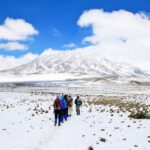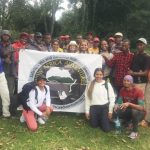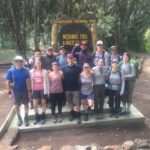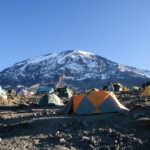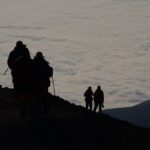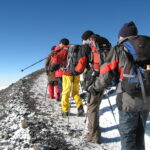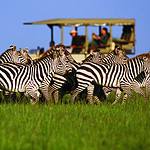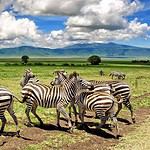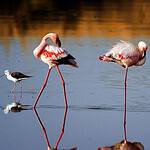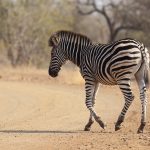Table of Contents
The Essential Packing List for Mt Kilimanjaro: Everything You Need to Reach the Summit
Planning your adventure to Africa’s tallest peak requires preparation, especially with the changing Kilimanjaro trekking forecast 2025 and shifting weather patterns. A well-prepared Kilimanjaro Packing List will be essential to handle these dynamic conditions, from rainfall in the rainforest zone to freezing temperatures near the summit.
According to Mount Kilimanjaro 2025 predictions, trekkers should expect more unpredictable climate conditions and a rise in eco-conscious gear. This makes reviewing your Kilimanjaro Packing List more important than ever, especially when considering sustainable and weather-resistant equipment.
As Kilimanjaro summit statistics 2025 show an increasing number of climbers attempting the mountain, having a complete Kilimanjaro Packing List can be the difference between a comfortable climb and one filled with unnecessary challenges.
Experts recommend that your Kilimanjaro Packing List include layers for temperature shifts, high-quality hiking boots, hydration systems, and altitude medications. These are critical as Kilimanjaro climbing routes 2025 become more popular and crowded.
Lastly, with changes in Kilimanjaro weather forecast 2025 and Kilimanjaro success rate 2025 data suggesting higher summit attempts, updating your Kilimanjaro Packing List each year ensures you’re equipped to face the mountain safely and successfully.
1. Clothing: Mastering the Art of Layering
Proper layering is critical to cope with Kilimanjaro’s extreme altitude zones and unpredictable weather.
| Layer | Purpose | Recommended Items |
|---|---|---|
| Base Layer | Moisture-wicking, regulates body temperature | 2–3 Merino wool/synthetic tops & 2 bottoms |
| Mid Layer | Insulation for cold evenings | 1 fleece jacket or down sweater |
| Outer Layer | Weatherproof barrier against wind and rain | 1 hardshell jacket & waterproof pants |
| Footwear | Traction, ankle support, warmth | Waterproof hiking boots, 4–5 wool/synthetic socks |
| Accessories | Protect from sun, wind, and cold | Warm hat, sun hat, buff, insulated gloves |
| Sleepwear | Warmth at night camps | Thermal pajamas or fleece sleepwear |
Pro Tip: Break in your boots before the trek and avoid cotton clothing—it holds moisture and leads to chills.
2. Gear Essentials: Tools for Trekking Success
From cold nights at base camp to sunrise summit attempts, your gear should be reliable and functional.
| Category | Must-Have Items | Nice-to-Have Additions |
|---|---|---|
| Sleeping | -20°C sleeping bag, sleeping pad | Silk liner, travel pillow |
| Hydration | 3L bladder/water bottles, water purification tablets | Collapsible water jug |
| Lighting | Headlamp with extra batteries | Red-light headlamp for night vision |
| Navigation | Map, compass, or GPS device | Altimeter, printed trail map |
| First Aid | Basic kit, Diamox (altitude meds), blister treatment | Electrolyte tablets, personal prescriptions |
| Trekking Poles | Lightweight and adjustable poles | Anti-shock feature optional |
| Weather Gear | UV sunglasses, gaiters, SPF lip balm, sunscreen | Windproof face mask |
Packing Hack: Use dry bags or ziplock bags to waterproof electronics, socks, and documents.
3. Personal Items: The Often-Forgotten Essentials
These items offer comfort and convenience during long days and chilly nights.
Travel Documents: Passport, visa, travel insurance, yellow fever card
Toiletries: Biodegradable soap, toothbrush/paste, wipes, hand sanitizer, feminine hygiene products
Electronics: Power bank, smartphone, camera, extra memory cards
Snacks: High-energy bars, trail mix, dried fruits, electrolyte sachets
Extras: Journal, book, earplugs, emergency whistle, lightweight camp towel
Tip: Wet wipes are gold on the mountain. Showers are rare—these are your best hygiene tool.
4. Smart Packing Tips for Mt Kilimanjaro Trekkers
Stick to the 15kg Limit: Porters can only carry up to 15kg (33 lbs). Keep non-essentials in your duffel and wear bulkier items.
Daypack Musts: Water, snacks, sun protection, rain gear, camera, gloves, and an extra layer.
Pack Strategically: Roll clothes to save space. Use compression sacks for your sleeping bag or jackets.
Test Your Gear: Use and adjust your equipment before the trek begins.
Respect Nature: Choose eco-friendly toiletries and avoid single-use plastics.
5. Weather Zones: What to Pack for Each Kilimanjaro Climate
Mount Kilimanjaro features five unique climate zones—pack accordingly:
Rainforest (800–3,000m): Lightweight, breathable clothing, waterproof layers
Moorland (3,000–4,000m): Warm fleece mid-layers, windproof gear
Alpine Desert (4,000–5,000m): Layered insulation, face protection
Summit Zone (Above 5,000m): Down jacket, thermal base layers, glacier-ready gloves
Final Kilimanjaro Packing Checklist Summary
Here’s a quick-reference packing list for Mt Kilimanjaro:
Clothing
Merino base layers (x2–3)
Fleece/insulating mid-layer (x1–2)
Waterproof shell (jacket + pants)
Thermal sleepwear
Hiking boots (broken in)
Camp shoes/sandals (optional)
4–5 pairs of trekking socks
Gloves (inner + insulated)
Hat (warm and sun-protection)
Gear
Sleeping bag (–20°C rating)
Sleeping pad
Trekking poles
Hydration system (3L)
Headlamp + extra batteries
UV sunglasses
First aid kit + meds
Backpack rain cover
Personal
Passport, travel insurance, visa
Biodegradable toiletries
Snacks, journal, power bank
Camera, reading material
Sunscreen, SPF lip balm
Wet wipes, toilet paper
Your Summit Starts with the Right Packing List for Mt Kilimanjaro
A successful Kilimanjaro trek begins long before you set foot on the mountain—it starts with preparation. This packing list for Mt Kilimanjaro covers every essential so you can stay warm, dry, safe, and energized. Take time to review and refine your list before departure, and remember: the lighter and smarter you pack, the better your trek will be.

